Fruit Facial At Home: 11 Essential Fruits For Glowing Skin
Besides eating, there are tons of different ways to use these sweet treats to nourish your skin!
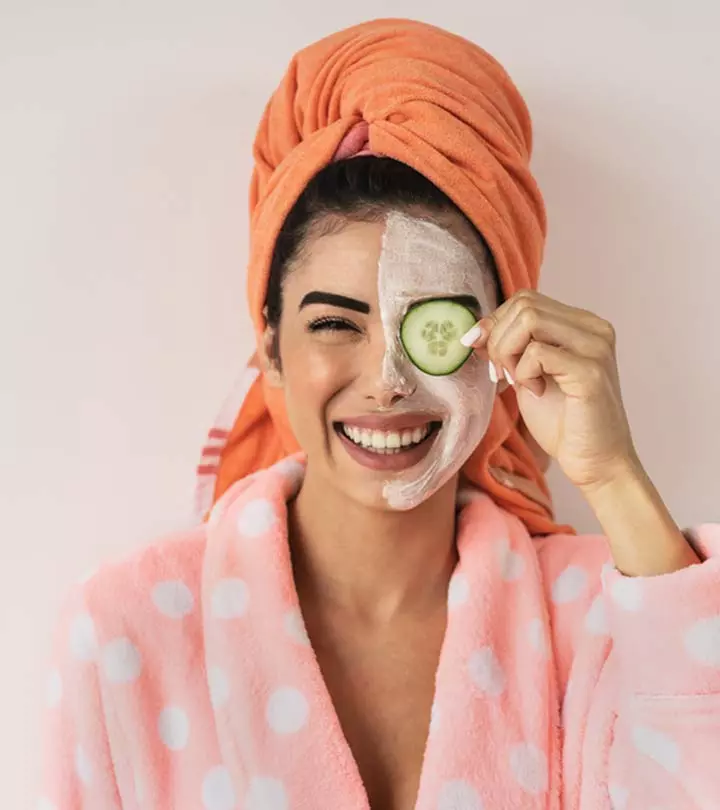
Image: ShutterStock
Fruits are loaded with essential vitamins and nutrients that not only help you stay fit and healthy but also enhance your beauty and make your skin glow. You do not need to visit your spa to get a facial done. Instead, you can indulge in some pampering and try a fruit facial at home to achieve that spa-like glowing skin in no time. Packed with essential vitamins, antioxidants, and hydrating properties, fruit facials can help you fight signs of aging and achieve healthier, more radiant skin. This article explores the list of fruits suitable for a facial, along with a step-by-step guide on how to do a fruit facial at home. Keep reading.
In This Article
Fruits To Use For Facials

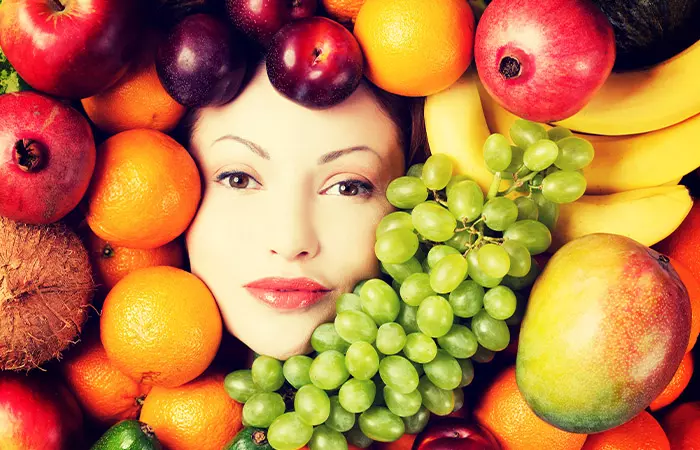
- Grapefruit: Using grapefruit for the skin, whether you apply it or eat it, has many benefits. Grapefruit extracts used in cosmetic products were found to improve skin hydration and lighten the skin (1). Grapefruit is also said to help boost skin shine and texture.
- Grapes: Grapes have a high antioxidant content that protects the skin from oxidative stressi A condition brought on by an imbalance between cells' capacity to detoxify oxygen radicals and their propensity to accumulate them. and damage (2). Antioxidants protect the skin from ultraviolet radiation. They also may help in the treatment of skin infections and disorders.
- Fig: In a study, a cream containing fig extracts was found to reduce epidermal lossi The volume of water that gradually evaporates from the outer layer of the skin due to a difference in water vapor pressure. and balance skin hydration and sebum content (3). Figs may also help reduce hyperpigmentationi A typical, benign occurrence in which particular areas of the skin develop darker patches than others. , acne, freckles, and wrinkles.
- Papaya: Papaya contains vitamins A, C, and E known for their antioxidant properties. Antioxidants protect the skin barrier function and reduce any signs of aging (4).
- Raspberry: Raspberry extract shows good antioxidant activity and can help reduce free radicals that cause wrinkles and other signs of aging (5).
- Apple: Apples contain alpha-hydroxy acids and polyphenolic compounds that help smoothen rough and dry skin and stimulate cell renewal (6). They lighten age spots and reduce wrinkles and blemishes.
- Banana: Bananas soothe skin inflammation and irritation. When used with fullers earth, they can also help cleanse the pores and remove any dirt and product residue (7).
- Strawberry: Strawberries contain polyphenols, vitamins, and antioxidants. These antioxidants protect skin from UV damage that may otherwise increase the risk of premature aging and cancer (8).
- Tomato: Tomatoes contain lycopene, a powerful antioxidant (9). This antioxidant can defend the skin against UV damage and may have a rejuvenating effect.
- Lemon: Lemons have anti-inflammatory and antimicrobial properties (10). It is best used to treat acne on oily or combination skin. It also increases collagen production, which improves skin smoothness and texture. It also has anti-aging properties and may reduce wrinkles.
- Cucumber: Cucumbers are known for their cooling, soothing, and healing properties (11). Their antioxidant properties may reduce the effects of wrinkles and sunburn.
Key Takeaways
- From grapes and papaya to apples and bananas, there are many fruits you can prepare homemade face packs with. These fruits are mixed with other ingredients like milk, honey, or yogurt for added benefits.
- Honey has bleaching properties and helps improve skin tone, while milk is a natural cleansing agent.
- Make sure you cleanse your skin thoroughly to remove makeup, dirt, and excess oil before a fruit facial.
Added Ingredients
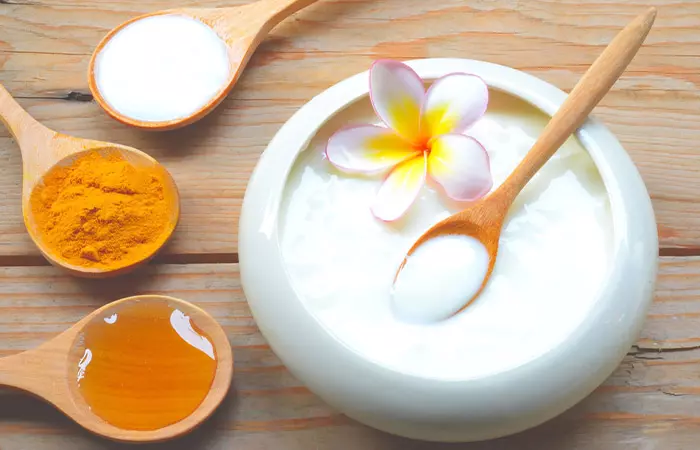
- Honey: Honey contains amino acids, proteins, and vitamins that may benefit skin health and wellness. It is a humectanti A substance used to reduce the loss of moisture and as a result irritation in the skin, available in both edible and inedible forms. known for its anti-aging properties. It reduces the visibility of wrinkles and blemishes. It also regulates skin pH levels (12).
- Milk: Research indicates that ingesting fermented milk may make skin clearer (13). Milk is often added to personal self-care products as a conditioning agent (14). Anecdotal evidence also suggests that milk may help make skin radiant.
- Yogurt: Probiotics like yogurt are used to treat acne and rosaceai A skin condition characterized by visible blood vessels, redness, and small, pus-filled bumps on the face. . They also can be used to protect the skin from aging and photodamage (15).
- Oatmeal: Oatmeal has antioxidant and anti-inflammatory properties. Its antioxidant properties may reduce the signs of premature aging, while its anti-inflammatory properties may help treat pruritusi Commonly known as itching, it is an unpleasant, annoying sensation that can affect any part of the body and trigger a desire to scratch. and dermatitisi A general term for conditions that cause skin inflammation characterized by rashes, itching, and redness. (16).
Scroll down for a step-by-step guide on how to try a fruit facial at home!
How To Do A Fruit Facial At Home: A Step-By-Step Guide
Step 1: Cleansing
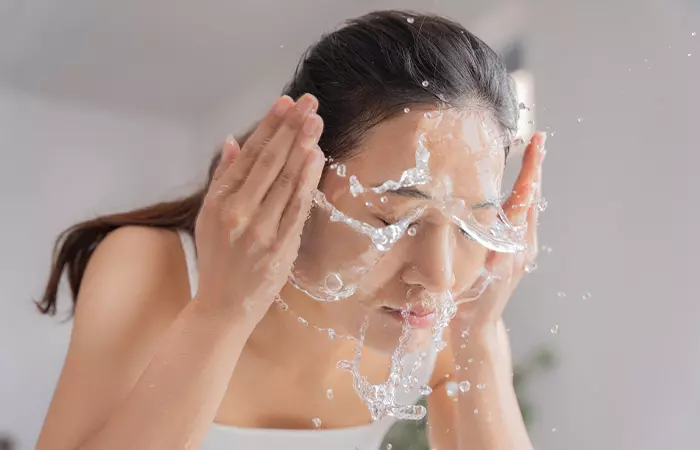
- The first step is to clean your face thoroughly.
- While you can wash the face with a mild soap, we suggest using cold raw milk in a cotton ball to wipe off all the impurities. Milk is great as a cleanser and is totally natural, so there are no harsh chemicals.
- Use the cotton ball in a circular motion to cleanse the skin.
- After cleansing, wash the face with lukewarm water. Milk helps to remove dirt and grime from the pores and adds an instant shine.
Step 2: Exfoliating
- The next step for a good fruit facial is to exfoliate.
- For this, you will need 1 tablespoon of oatmeal and 1 tablespoon of lemon peel powder or dried lemon peel.
- Add the two together and make a paste by adding a bit of rose water/plain water.
- Alternatively, you can also use a mixer to make the paste.
- Take lemon peels, add a bit of water to them, and use the mixer to make it into a pulp.
- Then add the oatmeal to it to make the paste.
- After the paste is ready, apply it all over your face using your fingers in a circular motion.
- Use the paste on your neck area also.
- Exfoliate for 2-5 minutes using the scrub and then wash off with lukewarm water.
- Pat dry the face.
Here are some alternative ingredients for making a scrub at home.
- Mix yogurt and oatmeal
- Mix oatmeal and milk
- Mix baking soda and water
Step 3: Lightening
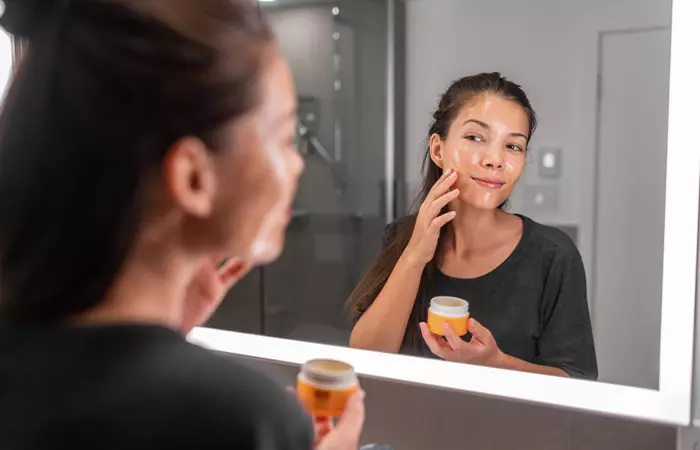
- Rub some honey on your skin to help it brighten a bit.
- Honey acts as bleach and helps to brighten skin tone.
- Wash it off after 10 minutes.
 Quick Tip
Quick TipStep 4: Opening up pores
- Boil a pan of hot water and use it to steam your face.
- Let the water stand for 5 minutes and lean over with a towel to keep the steam in.
- This will open the pores on your skin.
Step 5: Fruit Facial
- Take a ripe tomato and mash it into a paste and add some drops of lemon to it.
- Keep the mixture in a refrigerator for 20-30 minutes and take it out.
- Add a teaspoon of honey to it.
- Apply this mixture to your face and neck.
- Leave it on for 15 minutes and rinse off with water.
- Alternatively, mash a ripe banana, and add some lemon juice and a teaspoon of honey. Mix well and apply to the skin. Leave it on for 15 minutes.
 Quick Tip
Quick TipStep 6: Nourish and Moisturize
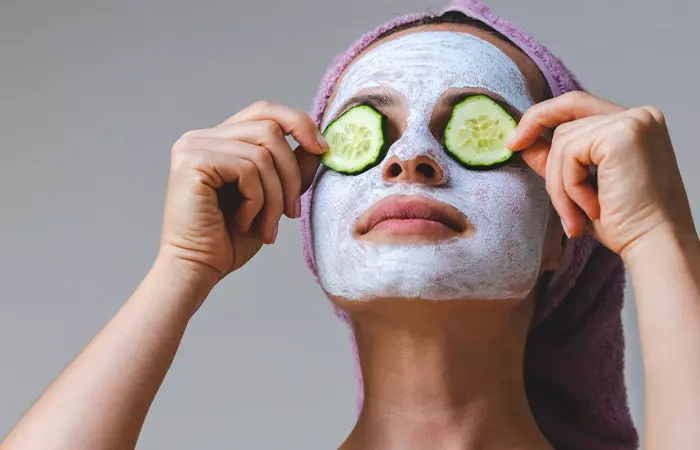
- Take a cucumber and make a paste of it.
- Apply this paste over the face and the neck area.
- Leave it on for 10 minutes and rinse off with cold water.
- Pat dry, and your home fruit facial is done.
- You may need to follow up with a moisturizer.
If you have dry skin, you can pair fruits with moisturizing ingredients like glycerin, coconut oil, or aloe vera. If you have oily or combination skin, pair fruits with essential oils like rosemary or peppermint.
Sheetal Verma, a YouTuber, shows her DIY fruit facial at home using papaya. She follows a 4 step procedure that involves first cleansing the face, then using papaya scrub, papaya cream, and at last papaya mask to remove the tan and brighten the skin. She states, “This papaya facial helps to brighten your skin, reduces acne and dark spots from the face; it also reduces wrinkles and fine lines from your face– I personally use this facial monthly once to get better results you can use this facial twice a month (i).”
Here are a few things to keep in mind before you start your fruit facial.
What To Do Before And After A Fruit Facial
- Before The Facial: Make sure your skin is clean. Wash your face with a face wash, and use a cleanser to thoroughly cleanse your skin. Make sure to remove all the makeup, if you have it on, from your skin. You can also apply a light or mild moisturizer. If you have acne-prone skin, make sure the moisturizer is water-based and not cream- or oil-based.
- After The Facial: Wash your face and pat it dry. Do not rub your face as it may cause redness and undo the effects of the facial. Lie down and relax, allowing your skin to breathe after the facial. This also gives time for the facial ingredients to work on the skin.
In addition to fruit facials, you can also utilize fruits to create nourishing homemade masks. Explore some of the best fruit-based masks below.
Fruit Masks For Face
1. Mango
Mangoes are rich in antioxidants, beta-carotene, and vitamins C and E that help combat free radical damage and promote skin health (18).
Ingredients
1 ripe mango
Directions
- Peel, pit, and mash the mango into a smooth paste.
- Apply it evenly to your face.
- Leave it on for 15-20 minutes.
- Rinse with lukewarm water.
- Repeat once weekly for a refreshing glow.
2. Avocado
Avocados offer abundant antioxidants like alpha- and beta-carotenes that effectively neutralize free radicals, safeguard your skin from environmental harm, and prevent premature aging (19), (20).
Ingredients
1 ripe avocado
Directions
- Mash and pit the avocado into a creamy consistency.
- Apply the paste to your face.
- Leave it on for 15-20 minutes.
- Rinse with lukewarm water.
- Repeat once weekly for nourished, radiant skin.
Before you begin your homemade fruit facial journey, it’s crucial to consider a few safety precautions to ensure a safe and effective experience, providing you with a sense of security and confidence in your skincare routine.
Precautions To Take During And After A Fruit Facial
- Always do a patch test before applying new ingredients, as some ingredients might cause irritation or allergic reactions to your skin, ruining your experience.
- Avoid citrus fruits for sensitive skin and select gentler fruits like papaya or avocado.
- Your skin is delicate following a facial and requires time to recover. Hence, please don’t touch it or apply harsh products, such as products containing exfoliating acids.
- After a fruit facial, you want to leave your skin feeling as natural as possible. Avoid putting on more layers of makeup immediately so that the products have time to get absorbed into your skin’s layers.
- Reduce sun exposure after a fruit facial, as it might increase your risk of sun damage.
- Apply a gentle moisturizer after the facial to soothe irritation, if any. Look for moisturizers free from harsh chemicals and fragrances, and preferably those with natural ingredients like aloe vera or cucumber.
Also, if you are using topical medication for any existing skin issue, it would be a good idea to discuss it with your doctor before proceeding with any fruit facial.
Infographic: Easy Steps To Do A Fruit Facial At Home
Fruits are great sources of nutrients and antioxidants that give your skin a natural glow. The infographic below guides you through an easy-to-follow fruit facial routine that harnesses the power of these natural ingredients to rejuvenate and hydrate your skin. Follow the steps for radiant and healthy skin.
Some thing wrong with infographic shortcode. please verify shortcode syntaxThere are many fruit facial benefits as the fresh fruit pulp feels extremely refreshing on the skin and may be good for the skin. They are the best way to rejuvenate, soften, brighten, and refresh your skin. These face packs can cleanse your skin, remove all impurities, and keep it hydrated. Follow the recipes shared in our article to give yourself a fruit facial at home. You can even customize the recipes and add ingredients that suit your skin. However, always do a patch test before using any natural ingredient. This will help you avoid allergic reactions and skin irritation.
Frequently Asked Questions
Can we do a fruit facial daily?
No, it is best to do a fruit facial once in 15 days or once a month.
Which fruit is good for pink lips?
The vitamins and antioxidants, among other nourishing elements, present in strawberries may help make them pink.
How long does a fruit facial last?
The effects of a fruit facial may last up to 2 weeks. It is recommended to do a fruit facial every 15 days to keep your skin smooth and healthy.
Is a fruit facial good for all skin types?
Yes, a fruit facial is a natural way to add glow to your face. Each fruit contains different nutrients and enzymes that may be more suitable to one skin type than the other. Some people may be allergic to certain fruits, ensure that you research properly and conduct a patch test before doing the facial.
Is a fruit facial good for sensitive skin?
Yes, fruits have essential vitamins and minerals that nourish the skin. You can opt for fruits like banana, cucumber, papaya, and watermelon as they are gentle and soothing to the skin.
Some thing wrong with illustration image shortcode. please verify shortcode syntaxLearn how to make your own natural facial mask with fresh fruits! Get glowing skin with this easy-to-follow tutorial. Watch the video below to know more!
Personal Experience: Source
StyleCraze's articles are interwoven with authentic personal narratives that provide depth and resonance to our content. Below are the sources of the personal accounts referenced in this article.
i. How to do papaya fruit facial for glowing n clear skin at home|Removes dark spots n dry skinhttps://www.youtube.com/watch?v=xfzLQQXJms4
References
Articles on StyleCraze are backed by verified information from peer-reviewed and academic research papers, reputed organizations, research institutions, and medical associations to ensure accuracy and relevance. Read our editorial policy to learn more.
- The Efficacy Of Cosmetic Products Containing Grape Fruit Extract In Improving Skin Hydration And Skin Color
https://www.researchgate.net/publication/320740246_The_efficacy_of_cosmetic_products_containing_grape_fruit_extract_in_improving_skin_hydration_and_skin_color - The Grape Antioxidant Resveratrol For Skin Disorders: Promise, Prospects, And Challenges
https://www.ncbi.nlm.nih.gov/pmc/articles/PMC3060966/ - Effects Of Cream Containing Ficus Carica L. Fruit Extract On Skin Parameters: In Vivo Evaluation
https://pubmed.ncbi.nlm.nih.gov/25593393/ - Formulation & In-Vitro Antioxidant Analysis Of Anti-Ageing Cream Of Carica Papaya Fruit Extract
https://www.researchgate.net/publication/356787585_FORMULATION_in-vitro_ANTIOXIDANT_ANALYSIS_OF_ANTI-AGEING_CREAM_OF_CARICA_PAPAYA_FRUIT_EXTRACT - Formulation And Evaluation Of Antioxidant Face Cream Containing Raspberry Fruit And Grape Seeds Extract
https://www.indianjournals.com/ijor.aspx?target=ijor:rjtcs&volume=7&issue=2&article=006 - Skin Aging & Modern Age Anti-Aging Strategies
https://globaljournals.org/GJMR_Volume19/3-Skin-Aging-and-Modern-Age.pdf - Traditional And Medicinal Uses Of Banana
https://www.phytojournal.com/archives/2012/vol1issue3/PartA/9.1.pdf - Strawberry-Based Cosmetic Formulations Protect Human Dermal Fibroblasts Against Uva-Induced Damage
https://www.ncbi.nlm.nih.gov/pmc/articles/PMC5490584/ - Antioxidant Activity Of Topically Applied Lycopene
https://pubmed.ncbi.nlm.nih.gov/14678532/ - Citrus Limon (lemon) Phenomenona Review Of The Chemistry, Pharmacological Properties, Applications In The Modern Pharmaceutical, Food, And Cosmetics Industries, And Biotechnological Studies
https://www.ncbi.nlm.nih.gov/pmc/articles/PMC7020168/ - Exploring Cucumber Extract For Skin Rejuvenation
https://academicjournals.org/journal/AJB/article-full-text-pdf/F05560C24959?__cf_chl_jschl_tk__=7566e4c5766726602c8d59d8fd99c8a81f132b06-1614331145-0-AbCRssPhom8TiB9QJ5F1TEihmUOU3vZ0DBP4lX5z2htS-QJW0rjGkrFnznefpqcf3fyXep_sIvlKxnsx6KKwRuB1qx7Ymt6eySZY3HZ37WRjBVz8C-UmCj4_G5OLMU0b7UruKP_2BLboK3f_qxxZ5PyyBKsaaj5KX3Gu44bYcJ5qooIGuTuYDDN4t_6yZghR5NhFSBWDXCGICQQDqlUX22EYEKmyg0EpJR696MnsngsWBNDVTXdcHlVKWypH_IufgcWF-tuVsHuJII4bIzvtEI_Br3zO1tLqvKek4U6HTQPjfIgVZ1xCBmLjFTrb86QqEKfFc_VhNgKdoxx3XPLJQbDNwRgTRQeQG061MpaoS0ihH_HJWwjCBV_aAwfVoTB8-w - Honey In Dermatology And Skin Care: A Review
https://onlinelibrary.wiley.com/doi/abs/10.1111/jocd.12058 - Effect Of Probiotic And Prebiotic Fermented Milk On Skin And Intestinal Conditions In Healthy Young Female Students
https://www.jstage.jst.go.jp/article/bmfh/35/3/35_2015-022/_article - Safety Assessment Of Milk Proteins And Protein Derivatives As Used In Cosmetics
https://www.cir-safety.org/sites/default/files/milk-derived%20proteins.pdf - The Effect Of Probiotics On Immune Regulation, Acne, And Photoaging
https://www.ncbi.nlm.nih.gov/pmc/articles/PMC5418745/ - Oatmeal In Dermatology: A Brief Review
https://ijdvl.com/oatmeal-in-dermatology-a-brief-review/ - Topical Vitamin C and the Skin: Mechanisms of Action and Clinical Applications
https://www.ncbi.nlm.nih.gov/pmc/articles/PMC5605218/ - Protective effect of mango (Mangifera indica L.) against UVB-induced skin aging in hairless mice
https://pubmed.ncbi.nlm.nih.gov/23458392/ - Polyhydroxylated fatty alcohols derived from avocado suppress inflammatory response and provide non-sunscreen protection against UV-induced damage in skin cells
https://pubmed.ncbi.nlm.nih.gov/20978772/ - Hass avocado composition and potential health effects
https://pubmed.ncbi.nlm.nih.gov/23638933/
Read full bio of Dr. Zeel Gandhi
Read full bio of Ramona Sinha
Read full bio of Eshna Das
Read full bio of Krati Darak






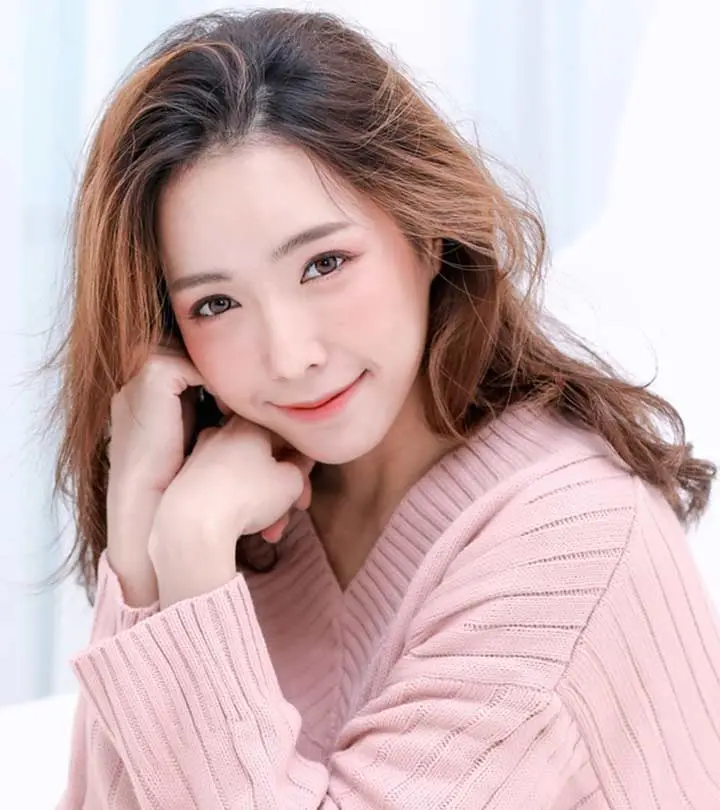
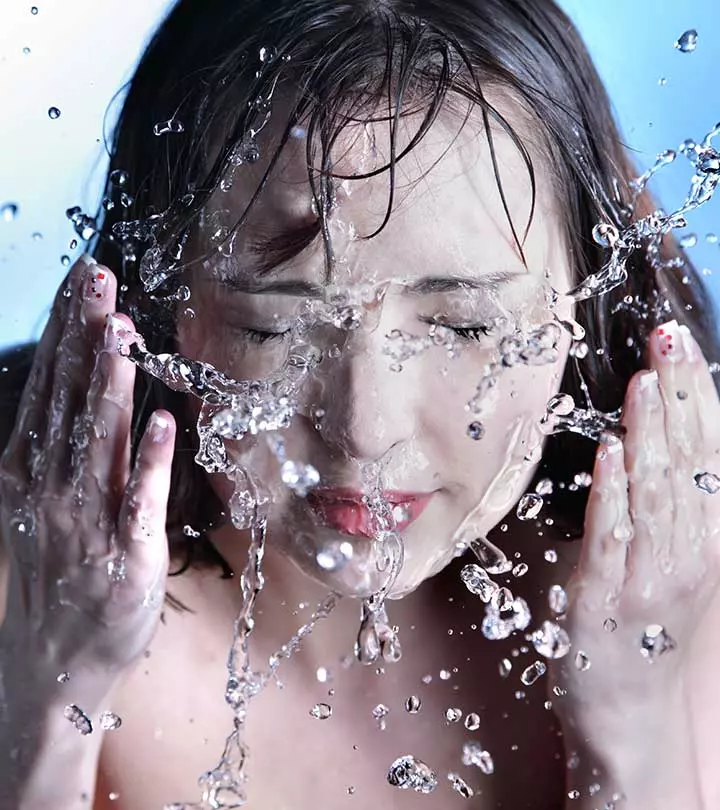



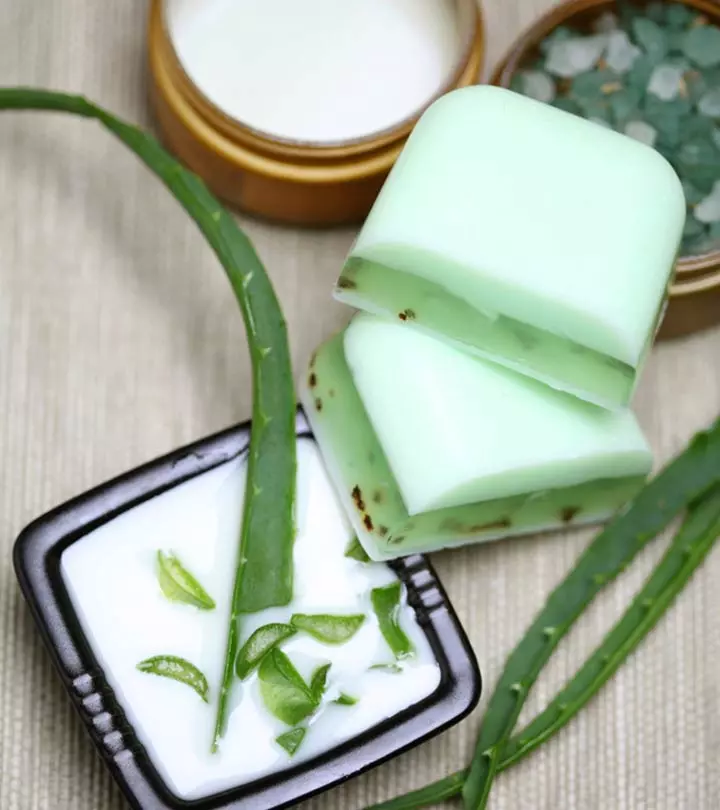
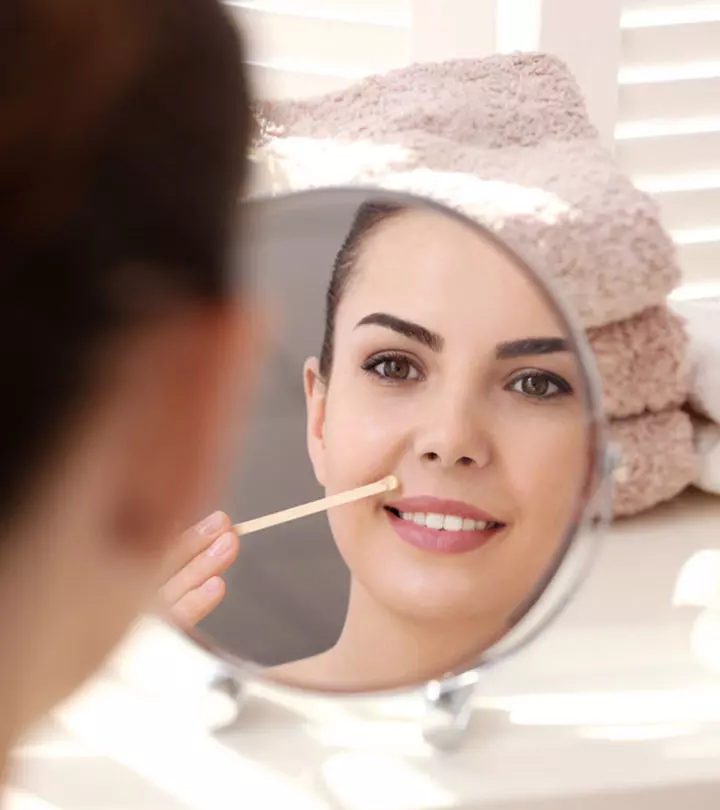

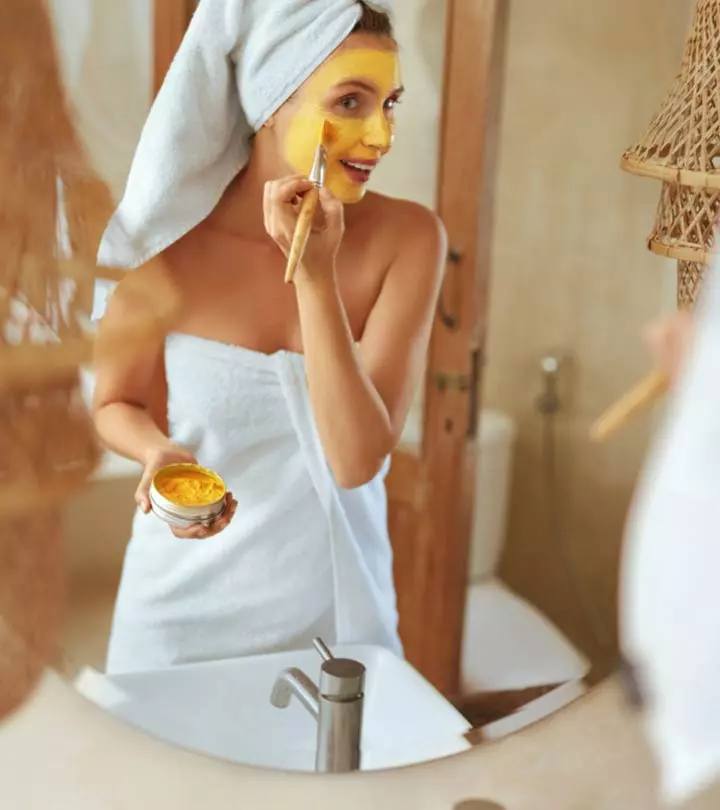
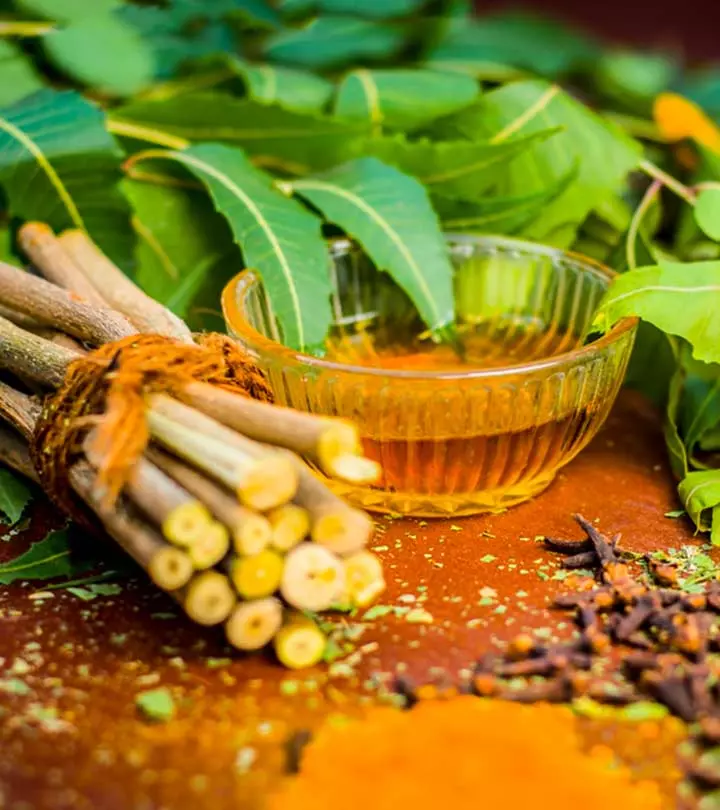
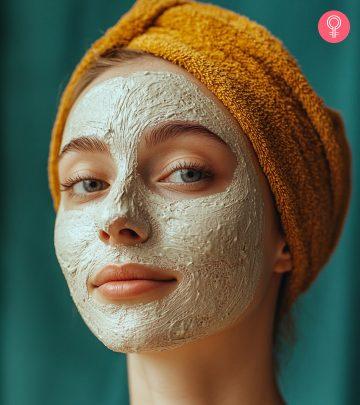
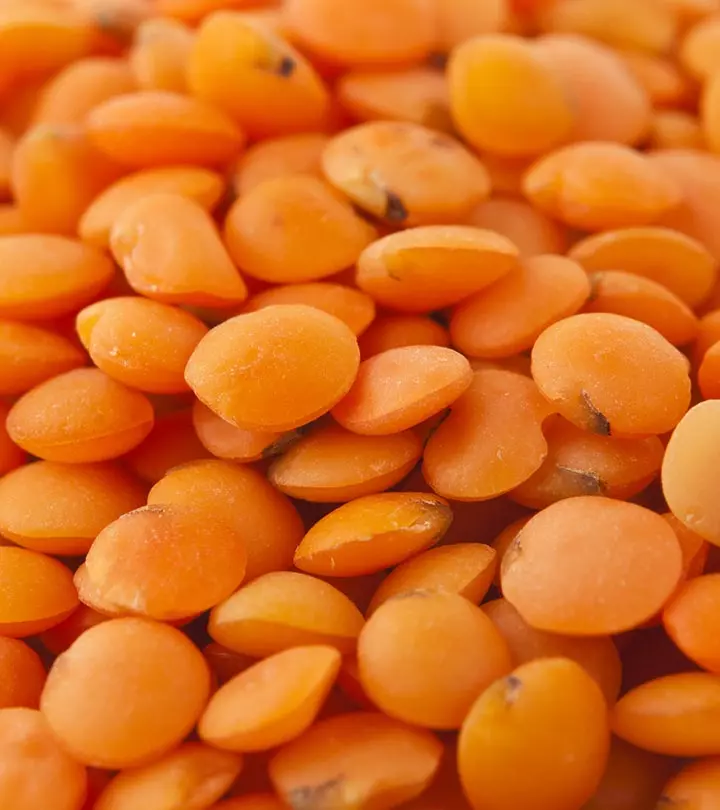
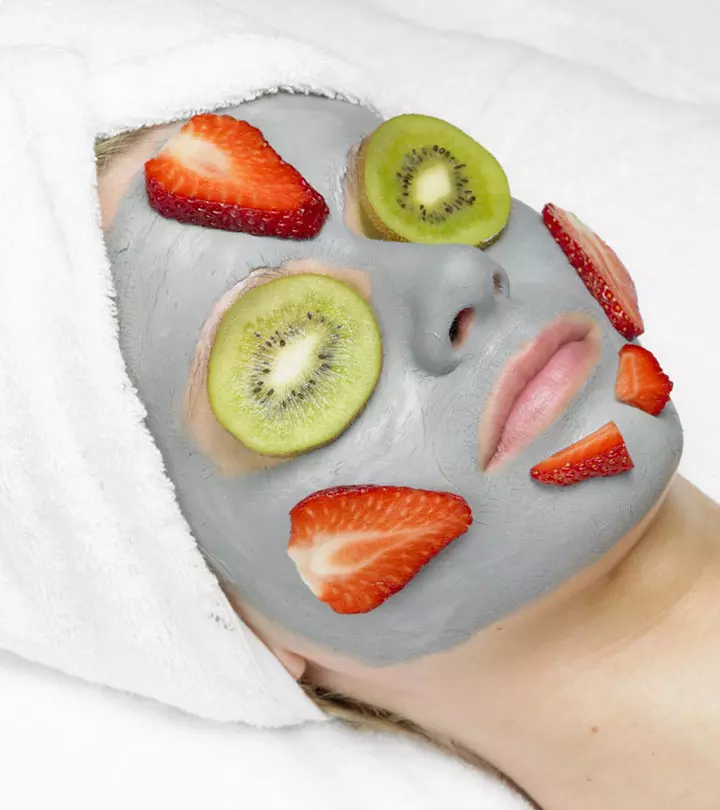
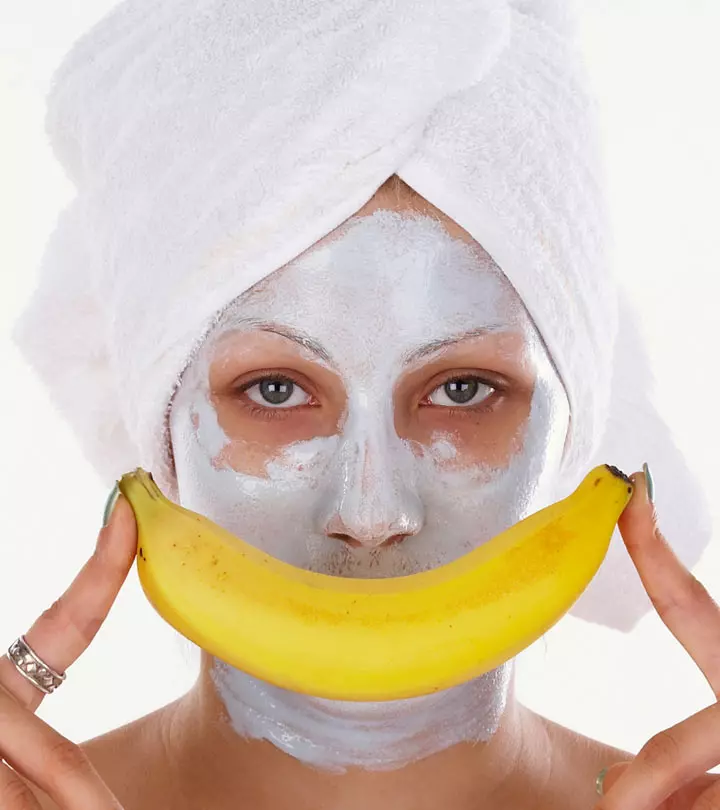

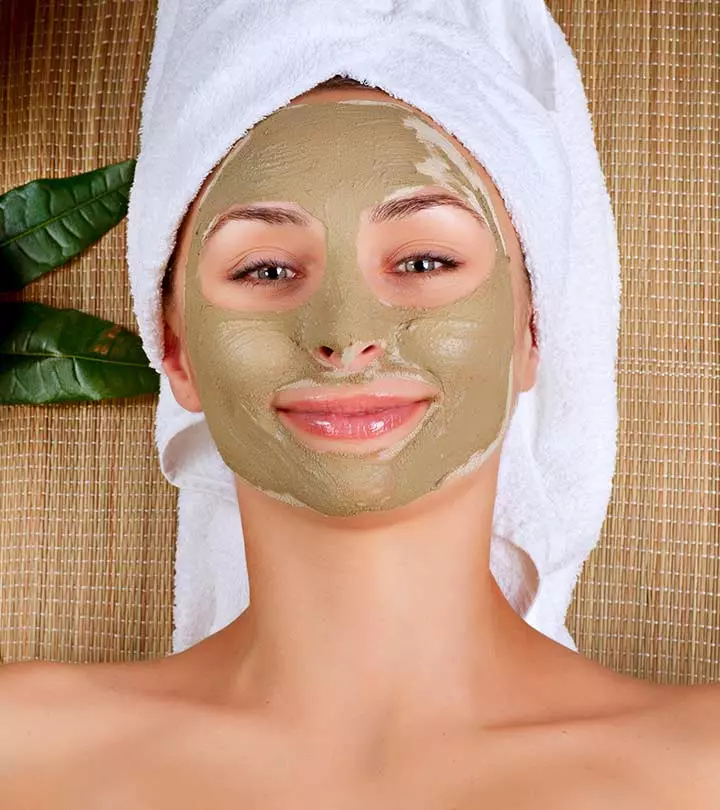
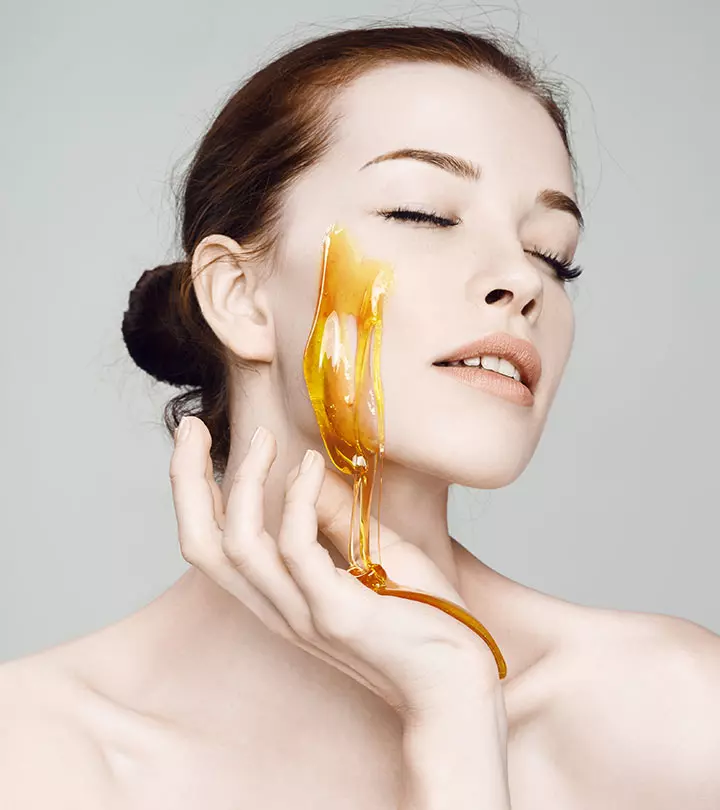


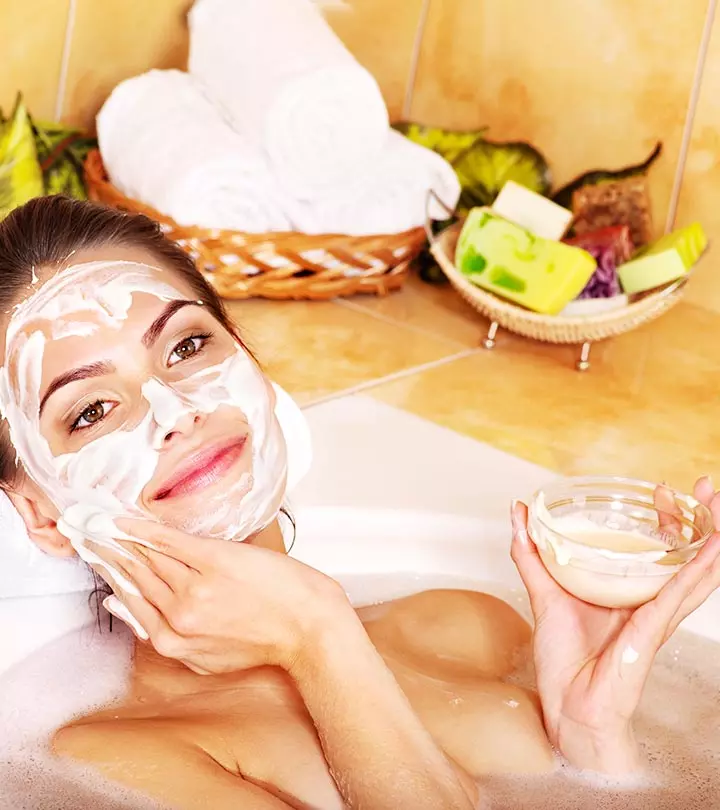

Community Experiences
Join the conversation and become a part of our empowering community! Share your stories, experiences, and insights to connect with other beauty, lifestyle, and health enthusiasts.